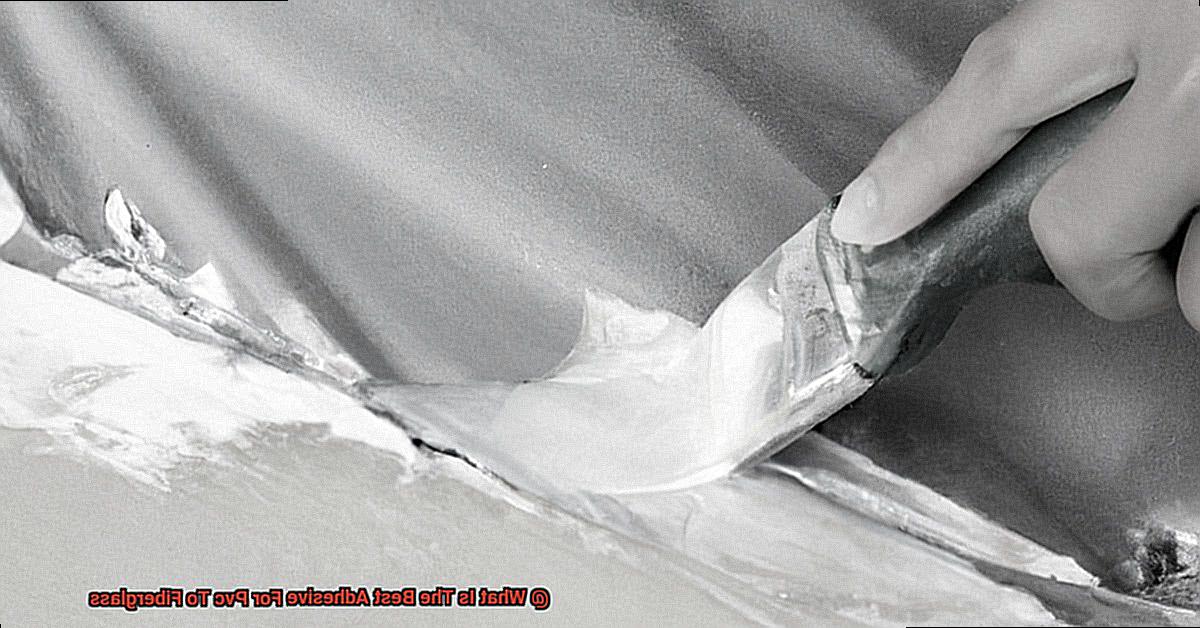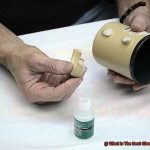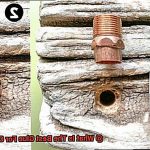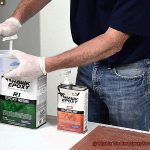Looking for an adhesive that will make your PVC and fiberglass combo rock-solid?
Look no more. In this blog post, we’re diving deep into the world of adhesives to uncover the absolute best product for this specific application.
Whether you’re fixing up a boat, sprucing up a pool, or tackling any other project involving PVC and fiberglass, finding the right adhesive is key to ensuring a long-lasting bond. So buckle up and join me as we explore the different types of adhesives out there, their unique properties, and ultimately determine the champion adhesive.
Get ready to be enlightened and discover the glue that’ll have your PVC and fiberglass sticking together like superglue on steroids.
What is PVC and Fiberglass?
Contents
- 1 What is PVC and Fiberglass?
- 2 Adhesive Options for PVC to Fiberglass Bonding
- 3 Epoxy Adhesives
- 4 Polyurethane Adhesives
- 5 Specific PVC Adhesives
- 6 Intended Use and Conditions
- 7 Temperature Resistance, Water Resistance, and Chemical Resistance
- 8 Proper Surface Preparation and Application Techniques
- 9 Conclusion
In the world of construction and manufacturing, the choice of materials is paramount to the success and durability of any project. Two commonly used materials are PVC and fiberglass, each with its unique characteristics and advantages.
In this comprehensive guide, we will delve into the details of PVC and fiberglass, exploring their properties, applications, and even discussing the best methods for bonding them together.
PVC: Versatility and Durability
PVC, or polyvinyl chloride, is a synthetic plastic polymer known for its exceptional versatility and durability. This material has gained popularity across various industries due to its resistance to chemicals, corrosion, fire, and UV radiation. Its flexibility and ease of installation make it a go-to choice in plumbing systems. Additionally, PVC can be found in everyday items such as vinyl flooring, window frames, electrical insulation, and even clothing.
Fiberglass: Strength Meets Lightweight
Fiberglass is a composite material that combines glass fibers embedded in a resin matrix. This unique combination gives fiberglass its high strength-to-weight ratio. Renowned for its exceptional strength, durability, resistance to impact, chemicals, moisture, extreme temperatures, as well as its excellent thermal and electrical insulation properties, fiberglass finds wide applications in construction projects requiring structural support or reinforcement. It is also used in boat hulls, insulation panels, automobile parts, and more.
Bonding PVC to Fiberglass:
When it comes to bonding PVC to fiberglass, selecting the right adhesive is crucial for achieving a strong and durable bond. Two common adhesive options are epoxy and polyurethane adhesives.
Epoxy Adhesive:
Epoxy adhesives are known for their high strength and durability. They are ideal for bonding PVC and fiberglass together due to their compatibility with both materials. Epoxy adhesives typically consist of two components – resin and hardener – that need to be mixed before application. Follow the manufacturer’s instructions for the proper ratio and curing time to ensure optimal bonding.
Polyurethane Adhesive:

Polyurethane adhesives offer excellent adhesion to both PVC and fiberglass surfaces. These adhesives provide flexibility, making them suitable for applications where movement or vibration is expected. Proper surface preparation, including cleaning and clamping, is essential for achieving a strong bond using polyurethane adhesive.
Considerations for Choosing the Right Adhesive:
When selecting an adhesive for PVC to fiberglass bonding, consider factors such as temperature resistance, water resistance, chemical resistance, and specific application requirements. It is advisable to consult adhesive manufacturers or experts for guidance tailored to your project’s needs.
Adhesive Options for PVC to Fiberglass Bonding
When it comes to bonding PVC to fiberglass, selecting the right adhesive is crucial for achieving a strong and durable bond. Fortunately, there are several adhesive options available that offer different strengths and benefits for this specific application.
One popular choice for PVC to fiberglass bonding is epoxy resin. Epoxy resin is known for its excellent bonding strength and durability. It forms a strong chemical bond that adheres well to both PVC and fiberglass surfaces. However, it is important to use an epoxy resin specifically formulated for bonding these materials to ensure optimal results.
Polyurethane adhesive is another option to consider. These adhesives provide good flexibility, which is essential when bonding materials with different expansion rates like PVC and fiberglass. They also offer high strength and resistance to water, chemicals, and temperature variations. This makes them suitable for both indoor and outdoor applications where the bond may be exposed to harsh conditions.
For those needing a high-strength bond with fast curing times, structural acrylic adhesive is an excellent choice. These adhesives are known for their exceptional adhesion and are often used in industries where structural integrity is critical. Look for a structural acrylic adhesive designed specifically for PVC and fiberglass bonding to ensure the best results.
If you require a quick bond, cyanoacrylate adhesive, commonly known as superglue, is worth considering. Cyanoacrylate adhesives are fast-curing and provide instant bond strength. They can effectively bond PVC to fiberglass, but it’s important to note that they may not offer the same level of durability as other adhesive options, particularly in high-stress or outdoor applications.

Another commonly used adhesive for PVC to fiberglass bonding is contact cement. Contact cement forms a strong bond when the adhesive on both surfaces is allowed to dry before joining them together. It is easy to apply and provides a relatively flexible bond.
When selecting an adhesive, it’s crucial to consider factors such as the specific application, desired strength and durability, as well as any environmental or chemical exposure the bond may encounter. Always follow the manufacturer’s instructions and test the adhesive on a small area first to ensure compatibility.
Achieving a successful PVC to fiberglass bond relies not only on choosing the right adhesive but also on proper surface preparation and application techniques. Thoroughly clean and dry the surfaces before applying the adhesive, and apply it evenly. Allow the adhesive to cure according to the manufacturer’s instructions for optimal results.
Epoxy Adhesives
When it comes to bonding PVC to fiberglass, epoxy adhesives are the ultimate solution. Renowned for their exceptional strength and durability, epoxy adhesives offer a reliable and long-lasting bond for this specific application. Let’s delve into the world of epoxy adhesives and explore their characteristics and considerations when used to bond PVC to fiberglass.
So, what sets epoxy adhesives apart? It all starts with their composition. Epoxy adhesives consist of two parts: a resin and a hardener. These components must be thoroughly mixed before application, as they chemically react to create a robust and secure bond. This chemical reaction ensures that your PVC and fiberglass surfaces are fused together with utmost strength.
One of the remarkable features of epoxy adhesives is their outstanding adhesion to both PVC and fiberglass surfaces. This means you can trust that your bond will withstand various conditions. However, proper surface preparation is crucial. Ensure that the surfaces are clean, dry, and free from any contaminants to achieve optimal bonding.
Curing time is another vital consideration when working with epoxy adhesives. The duration can range from a few minutes to several hours, depending on the specific product. It is imperative to carefully follow the manufacturer’s instructions for the best results. Once cured, epoxy adhesives form a rigid and durable bond capable of withstanding harsh environmental conditions.
In addition to their strength, epoxy adhesives also offer excellent resistance to chemicals, water, and temperature fluctuations. This makes them an ideal choice for outdoor or industrial applications where durability is paramount.
Selecting the right epoxy adhesive for your PVC to fiberglass bonding needs is crucial. Some products may require additional steps such as mixing ratios or surface priming. Always refer to the manufacturer’s instructions to ensure a successful bond.
Polyurethane Adhesives
When it comes to bonding PVC to fiberglass, you need a glue that can handle the unique challenges posed by these materials. Enter polyurethane adhesives – the superheroes of the adhesive world. In this article, we will explore the incredible advantages of using polyurethane adhesives for this specific application and discover why they are the unrivaled choice for achieving a robust and enduring bond.
Flexible Bonding:
Polyurethane adhesives possess a remarkable ability to create flexible bonds between PVC and fiberglass. These materials have different expansion and contraction rates, creating stress and potential bond failure. However, polyurethane adhesives rise to the occasion, accommodating these thermal differences with ease, ensuring a bond that can stand the test of time without flinching.
Exceptional Adhesion:
Prepare to be amazed by the strong molecular bond that polyurethane adhesives form with both PVC and fiberglass surfaces. Their adhesive properties are nothing short of extraordinary, enabling them to create a tight seal that can endure even the most demanding applications. With polyurethane adhesives, you can trust that your bond won’t let you down when it matters most.

Moisture Resistance:
For applications where water or other liquids are commonplace, polyurethane adhesives rise to the challenge. Their unwavering resistance to moisture ensures that the bond remains intact even in wet or humid environments. Bid farewell to weakened bonds caused by water damage and say hello to a bond that stands strong against the elements.
Chemical Resistance:
In industrial or outdoor settings, PVC and fiberglass may come into contact with various chemicals or solvents. Fear not, for polyurethane adhesives are here to save the day. These adhesives exhibit excellent resistance to chemicals, shielding your bond from potential corrosive agents. With polyurethane adhesives, your bond remains unyielding and unaffected.
Application Options:
Polyurethane adhesives come in two forms: the ready-to-use one-component adhesive and the mix-before-application two-component adhesive. Both options offer outstanding bonding properties, allowing you to choose the one that suits your specific needs. Whether you prefer convenience or customization, polyurethane adhesives have you covered.
Proper Surface Preparation:
To unlock the full potential of polyurethane adhesives, proper surface preparation is vital. Clean, dry, and contaminant-free surfaces are essential for effective bonding. Additionally, slightly roughening the surfaces enhances adhesion, ensuring a bond that is not just strong but also reliable.
Specific PVC Adhesives
When it comes to bonding PVC to fiberglass, selecting the right adhesive is crucial for unleashing the true potential of your project. Specific PVC adhesives are designed to create a strong and long-lasting bond between these two materials, ensuring durability and reliability. In this article, we will delve into the realm of specific PVC adhesives, exploring their types, applications, and factors to consider when choosing the perfect adhesive for your project. By understanding these key aspects, you can confidently embark on your PVC to fiberglass bonding journey.
Understanding the Types of Adhesives:
Within the world of specific PVC adhesives, two popular options stand out: PVC pipe cement and two-part epoxy adhesives. Each of these adhesives possesses unique properties that make them suitable for bonding PVC to fiberglass.
- PVC Pipe Cement: This versatile adhesive, commonly used in plumbing applications, serves as an excellent choice for bonding PVC to fiberglass. With its ability to form a chemical bond, PVC pipe cement creates a durable connection between the two materials. Its ease of application and remarkable temperature resistance further enhance its appeal.
- Two-Part Epoxy Adhesives: Renowned for their remarkable bonding strength and resistance to water and chemicals, two-part epoxy adhesives offer unparalleled reliability when bonding PVC to fiberglass. Consisting of a resin and a hardener, these adhesives unleash their bonding prowess once mixed together. Their versatility and durability make them ideal for various applications.
Selecting the Best Adhesive:
Choosing the right adhesive involves considering several factors that align with your project’s requirements:
- Application: Understanding the specific needs of your project is paramount. Whether you are working on a plumbing system or engaging in boat repair, selecting an adhesive with suitable properties such as flexibility, temperature resistance, and chemical resistance ensures optimal results.
- Bonding Strength: The level of strength required for your bond varies from project to project. Some adhesives offer higher tensile or shear strength than others, allowing you to choose the adhesive that matches the load-bearing capacity needed for your application.
- Surface Preparation: Preparing the surfaces for bonding is a crucial step in achieving a successful bond. Thoroughly cleaning, drying, and removing contaminants from both the PVC and fiberglass surfaces maximizes the adhesive’s ability to create a solid bond.
Following Manufacturer’s Instructions:

Manufacturers provide instructions for a reason – to help you achieve the best results. By following these instructions, you can ensure that you use the adhesive correctly, take necessary safety precautions, apply it within the recommended temperature range, and allow sufficient curing time. This adherence to guidelines guarantees a strong and reliable bond that stands the test of time.
Intended Use and Conditions
Finding the perfect adhesive for bonding PVC to fiberglass requires careful consideration of the intended use and the conditions it will face. Different adhesives possess unique strengths and properties, making some better suited for specific applications.
Firstly, determining the purpose of the bond is crucial. Are you aiming to create a watertight seal for a marine application? Or perhaps you need to join PVC pipes with a fiberglass reinforcement? Understanding these specific requirements will help you narrow down your options and select an adhesive that can withstand the demands of your intended use.
Additionally, the environmental conditions to which the bonded materials will be exposed play a vital role. Will they face extreme temperatures, moisture, or chemicals? These factors can greatly impact adhesive performance. For outdoor applications, it is essential to choose an adhesive that can endure UV exposure and resist water penetration.
Flexibility is another critical factor. PVC and fiberglass may expand and contract differently under various conditions. Therefore, opting for an adhesive with excellent flexibility can prevent cracking or detachment of the bond over time.
Furthermore, considering the curing time of the adhesive is essential. Some adhesives require longer curing times, which might not be suitable for projects with strict deadlines. Conversely, fast-curing adhesives may not provide sufficient bond strength if proper curing conditions are not met.
Lastly, safety considerations must not be overlooked. Some adhesives emit strong fumes or necessitate special handling precautions. To ensure compliance with guidelines and regulations, it is crucial to choose an adhesive that aligns with safety standards.
Temperature Resistance, Water Resistance, and Chemical Resistance
When it comes to bonding PVC to fiberglass, choosing the right adhesive is crucial. Just like finding the perfect partner, you need an adhesive that can withstand temperature extremes, navigate water effortlessly, and resist the corrosive effects of chemicals. In this blog post, we’ll explore why temperature resistance, water resistance, and chemical resistance are vital factors to consider when selecting the best adhesive for this task.
Temperature Resistance:
To ensure a strong bond that can endure extreme temperatures, silicone adhesives are a top choice. These adhesives possess exceptional temperature resistance properties and can withstand both freezing cold and scorching heat without compromising bond strength. Additionally, silicone adhesives maintain flexibility even at low temperatures, making them ideal for PVC and fiberglass bonding applications in environments with fluctuating temperatures.
Water Resistance:
Epoxy adhesives excel in water resistance, making them well-suited for PVC to fiberglass bonding applications exposed to moisture. These adhesives form robust bonds that can endure prolonged exposure to water, making them perfect for marine or outdoor installations. With excellent resistance against water-related issues like corrosion or degradation, epoxy adhesives ensure durability in challenging environments.
Chemical Resistance:
When it comes to chemical resistance, polyurethane adhesives stand out from the crowd. These adhesives can withstand exposure to various chemicals and solvents, making them an excellent choice for industries such as automotive or aerospace. By resisting weakening or damage caused by chemicals, polyurethane adhesives ensure the longevity and durability of the bonded PVC and fiberglass materials.
Proper Surface Preparation and Application Techniques

Look no further. In this guide, we will explore the importance of proper surface preparation and application techniques. Whether you’re a DIY enthusiast or a professional, these tips will help you achieve successful results.
Step 1: Surface Preparation
To ensure a robust bond, cleanliness is key. Start by wiping down the PVC surface with a solvent like isopropyl alcohol or acetone to remove any dirt, oils, or contaminants. Thoroughly apply the solvent using a clean cloth or rag.
Next, roughen up the PVC surface using sandpaper or a sanding block. Gently sand in a circular motion until the surface feels slightly rough. Be cautious not to apply too much pressure, as it could damage the PVC.
Moving on to the fiberglass surface, clean it with a mild detergent and water solution. Scrub gently with a soft brush or sponge to remove any dirt or grime. Rinse thoroughly and allow the fiberglass to dry completely.
Step 2: Choosing the Right Adhesive
Selecting the appropriate adhesive is crucial for a successful bond between PVC and fiberglass. Silicone adhesives are ideal for extreme temperature environments, while epoxy adhesives excel in water resistance. Polyurethane adhesives offer excellent chemical resistance. Choose the adhesive that suits your specific application.
Step 3: Applying the Adhesive
Follow the manufacturer’s instructions carefully when applying the adhesive. Pay attention to factors such as application temperature, mixing ratios (if applicable), and curing times. Deviating from these guidelines can compromise the bond strength.
Apply the adhesive to one surface using a brush, roller, or recommended applicator. Ensure even coverage on all areas that will come into contact with the other material. Avoid applying excessive adhesive, as it can lead to messy and weak bonds.
Step 4: Bonding the Surfaces
Join the PVC and fiberglass surfaces together, applying pressure to promote good contact between the materials. Clamps, weights, or other suitable methods can be used to maintain pressure during the curing process. Allow the adhesive to cure undisturbed for the specified time recommended by the manufacturer.
Step 5: Testing and Final Touches
After the curing time has elapsed, test the bond strength by gently assessing the connection. If weaknesses or failures are detected, reapply the adhesive and repeat the bonding process.
XftQ28F5SC0″ >
Conclusion
In conclusion, when it comes to bonding PVC to fiberglass, the best adhesive is one that is specifically designed for these materials. It is important to choose an adhesive that can withstand the unique challenges posed by PVC and fiberglass, such as their different expansion rates and surface textures.
One highly recommended adhesive for this purpose is a two-part epoxy adhesive. This type of adhesive offers excellent strength and durability, ensuring a long-lasting bond between PVC and fiberglass. Additionally, it has good resistance to water, chemicals, and temperature fluctuations, making it suitable for both indoor and outdoor applications.
Another option to consider is a polyurethane adhesive. This adhesive provides a strong bond while also offering flexibility, which is beneficial when joining materials with different expansion rates like PVC and fiberglass. It is also resistant to water and weathering, making it suitable for use in various environments.
When applying the adhesive, it is crucial to follow the manufacturer’s instructions carefully. Proper surface preparation is essential for achieving a successful bond. Both the PVC and fiberglass surfaces should be clean, dry, and free from any contaminants or debris.
In summary, choosing the right adhesive for bonding PVC to fiberglass can make all the difference in achieving a strong and durable bond. By opting for a two-part epoxy or polyurethane adhesive specifically formulated for these materials, you can ensure a reliable connection that will withstand the test of time.






